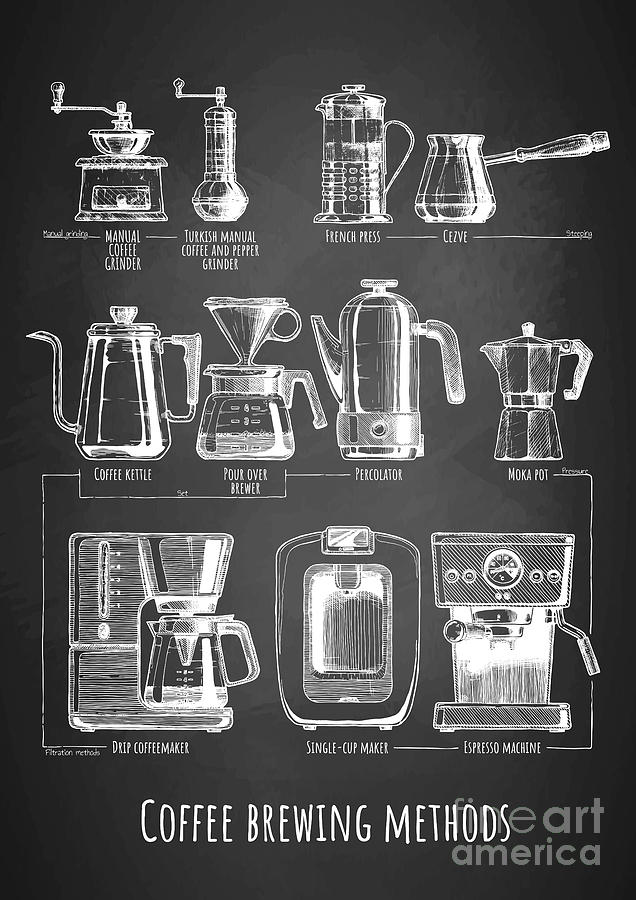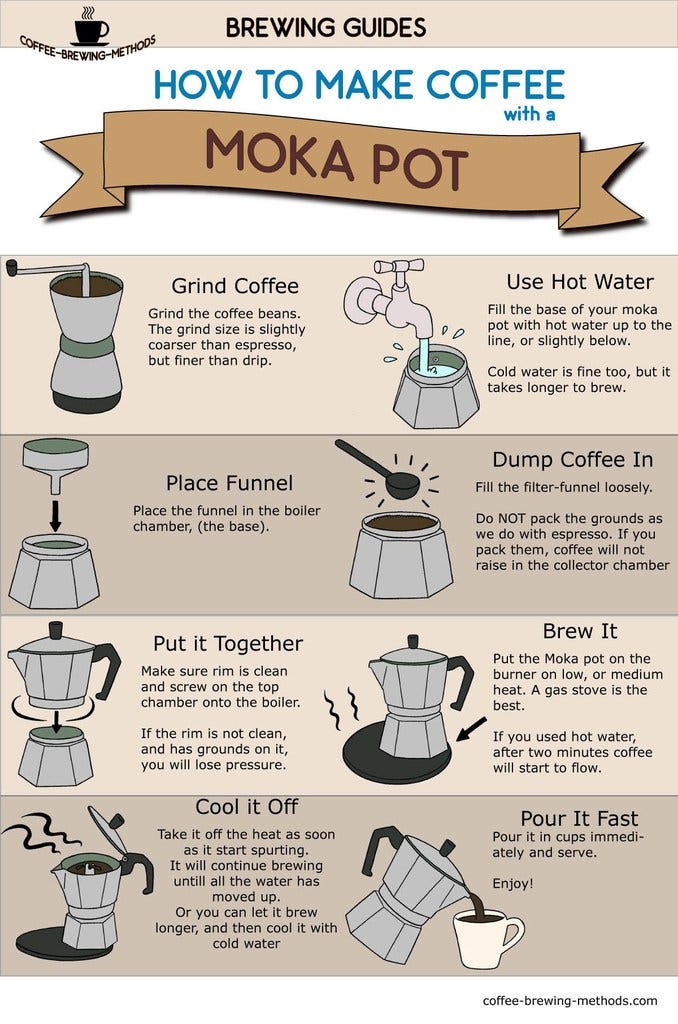The Science Behind Coffee Developing: Just How Temperature Level and Time Affect Your Beverage
Understanding the science behind coffee brewing discloses that temperature and time are not mere variables yet critical aspects that determine the drink's flavor account and general quality. The ideal brewing temperature level typically drops between 195 ° F and 205 ° F, while the duration of removal differs dramatically throughout various techniques. This interaction of factors can cause a mug that is either unsatisfactory or wonderful. As we discover the subtleties of these components, the concern emerges: exactly how can one properly equilibrium temperature and time to accomplish that excellent brew?
The Chemistry of Coffee Extraction
The chemistry of coffee extraction looks into the intricate procedures that change raw coffee beans right into the aromatic beverage delighted in worldwide. This change largely includes the solubility of numerous substances existing in the beans, which are influenced by elements such as work dimension, water high quality, and the brewing technique employed.
During the developing procedure, warm water acts as a solvent, drawing out soluble substances, consisting of caffeine, lipids, sugars, and acids, from the coffee premises. Each compound contributes to the taste profile, scent, and body of the final beverage. Acids are liable for zesty and bright notes, while oils add to an abundant mouthfeel.
The preliminary stages of developing extract acids and sugars, leading to a positive level of acidity, while extended removal can lead to anger due to over-extraction of unfavorable substances. Comprehending these chemical interactions is important for optimizing developing methods, as the balance in between removal time and water temperature level can considerably influence the general high quality of the coffee.
Perfect Brewing Temperatures
Locating the right brewing temperature is essential for unlocking the complete possibility of coffee tastes and scents - coffee brewing methods. Research study suggests that the optimum array for developing coffee exists in between 195 ° F to 205 ° F(90 ° C to 96 ° C) Within this array, the removal process efficiently dissolves the preferable soluble substances in coffee beans, resulting in a balanced and savory cup
Developing at lower temperature levels, such as below 195 ° F(90 ° C ), might result in under-extraction, generating an acidic and weak brew with soft flavors. Alternatively, developing at temperatures going beyond 205 ° F(96 ° C) can cause over-extraction, generating a rough and bitter preference due to the too much dissolution of undesirable compounds, such as tannins.
Moreover, the optimal brewing temperature can vary relying on the coffee bean kind and roast level. For example, lighter roasts commonly gain from a little higher temperature levels to boost their complex flavor profiles, while darker roasts may be better matched to reduced temperatures to reduce resentment.
Inevitably, maintaining accuracy in developing temperatures is critical for attaining an unified equilibrium of flavors, guaranteeing that every mug of coffee supplies an enjoyable sensory experience.
Influence of Brewing Time
Developing time plays an essential function in identifying the flavor profile and overall high quality of coffee. The removal procedure, which affects the taste, fragrance, and body of the beverage, is mainly depending on the length of time the coffee grounds touch with water. Much shorter developing times can cause under-extraction, resulting in a weak or sour taste, as insufficient soluble compounds are dissolved. On the other hand, prolonged brewing can lead to over-extraction, where undesirable substances are released, resulting in an astringent or bitter preference.
Optimal developing time differs depending upon the technique utilized and the grind size of the coffee. A French press typically requires about four mins, while coffee removal is generally finished within 25 to 30 secs. It is essential to calibrate developing time in combination with various other variables, such as water temperature level and coffee-to-water ratio, to accomplish the desired flavor account.
Comprehending the effect of developing time makes it possible for coffee lovers to improve their developing strategies, inevitably enhancing the sensory experience of their mug (coffee brewing methods). With cautious focus to this variable, one can unlock the full potential of the coffee, disclosing its unique characteristics and nuances
Brewing Techniques and Their Results

As an example, approaches like French press and cool brew permit a much longer steeping time, leading to a fuller body and robust taste due to enhanced extraction of oils and soluble solids. On the other hand, coffee brewing uses high pressure and a shorter removal time, producing a concentrated shot that highlights extreme tastes and a rich crema.
Pour-over techniques, such as Chemex or V60, provide a more controlled removal procedure, permitting the maker to adjust flow rate and water distribution, which can boost brightness and clarity. On the other hand, percolation techniques cycle water with the coffee grounds several times, bring about a more powerful, commonly bitter flavor.
Last but not least, the use of paper filters versus metal filters can additionally affect the final preference; paper filters commonly produce a cleaner mug by trapping oils and great bits, while metal filters enable more oils to pass through, adding to a fuller mouthfeel - coffee brewing methods. Recognizing these nuances can raise the coffee experience significantly
Tips for Improving Your Brew
A well-executed brew can transform even the simplest coffee into a remarkable experience. To attain this, attention to detail is essential. Begin with top notch, fresh baked beans, as their taste account diminishes over time. Grind the beans simply before making to make the most of quality, making certain the grind size matches your developing method-- coarser for French press and finer for espresso.
Water high quality plays a critical duty; usage filtered water devoid of contaminations. The perfect brewing temperature level ranges between 195 ° F and 205 ° F(90 ° C to 96 ° C ) Too hot can swelter the coffee, while as well trendy might under-extract tastes.
Timing is equally essential. For immersion approaches, steeping for three to five minutes is ideal, whereas drip techniques commonly take around five mins. Trying out mixture times to find your preferred toughness.

Conclusion
In summary, the detailed relationship in between temperature and time is critical in the coffee developing process. Recognizing these scientific concepts encourages individuals to fine-tune their developing techniques, inevitably leading to a Your Domain Name more enjoyable and well balanced coffee experience.
Comprehending the science behind coffee developing discloses that temperature and time are not mere variables however pivotal components that determine the beverage's taste profile and total quality. Recognizing these chemical communications is vital for enhancing developing methods, as the balance between removal time and water temperature level can significantly affect the total high quality of the coffee.Brewing time plays a crucial duty in identifying the taste profile and general top quality of coffee. By concentrating on these components-- bean quality, grind size, water temperature, soaking time, and ratio-- look at here now you can raise your coffee brewing procedure, resulting in a constantly premium mug.
In summary, the complex partnership between temperature and time is critical in the coffee brewing process.